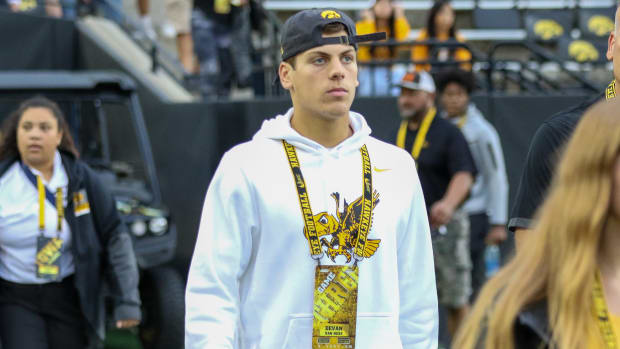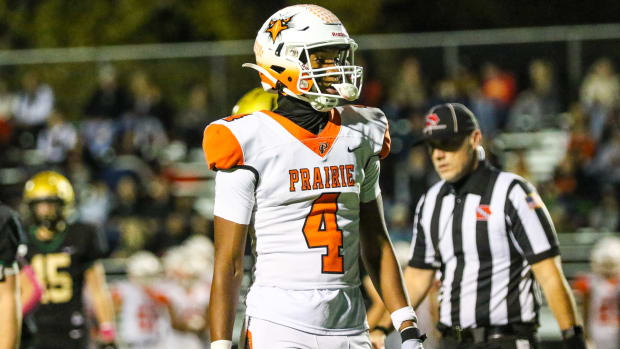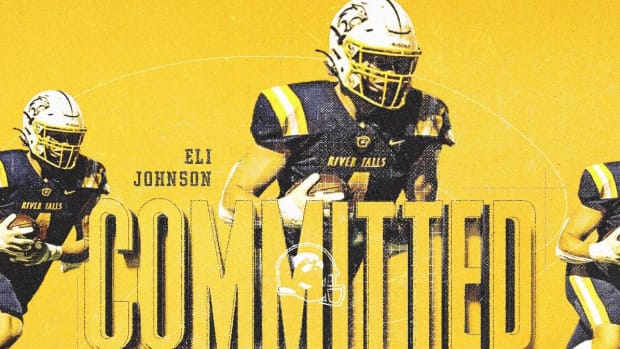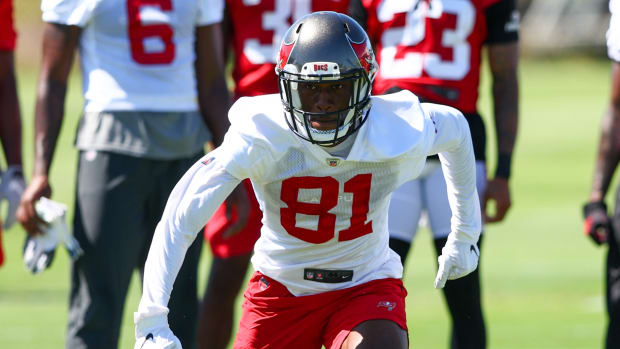1922 Hawkeyes Surprised with Unbeaten Campaign
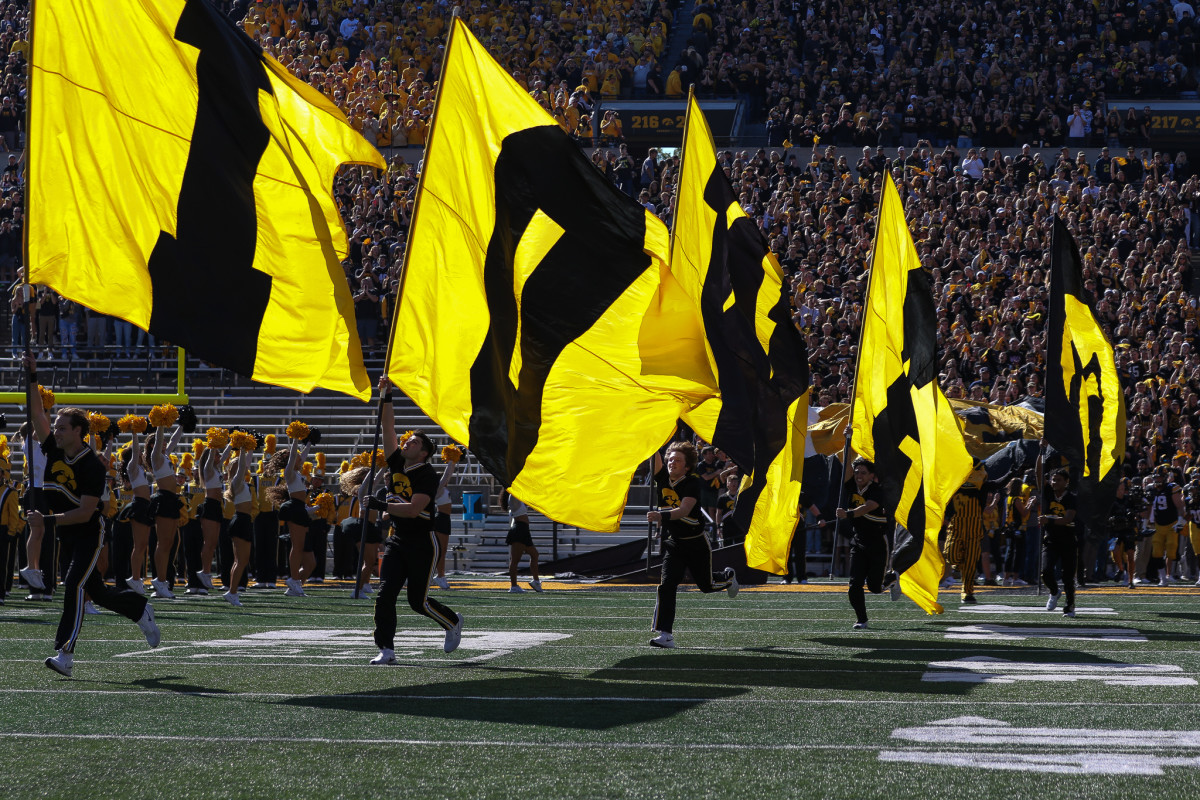
The Kinnick Stadium Wall of Honor is an elite club, with just 10 members.
Three of them - tackle Duke Slater, quarterback Aubrey Devine and fullback Gordon Locke - played on Iowa’s undefeated 1921 team that was declared the national champion by both the Billingsley Report and Parke Davis.
Iowa took a 10-game winning streak under Coach Howard Jones into the 1922 season, but optimism wasn’t through the roof. Locke returned. So did first-team all-Big Ten players Chester Mead at guard and Max Kadesky at end. But Slater and Devine were huge losses. So were all-Big Ten first-team end Lester Belding, center John Heldt and defensive back Glenn Devine.
“A rather dismal outlook confronted the Iowa football team when the 1922 season started on September 15,” said the “Hawkeye,” the University of Iowa’s yearbook.
The loss of so many elite players was viewed as an insurmountable challenge.
“These men had been the backbone of the team during the preceding season, and Iowa supporters were convinced that with their passing another great team had vanished,” added the “Hawkeye.’ “Iowa was not seriously considered when the probable results of the conference championship football race were forecasted.”
But a century ago, Iowa’s 1922 football team defied projections by going 7-0 again, winning another Big Ten title and being named a national champion again by the Billingsley Report.
Jones had gained national fanfare when he coached the Hawkeyes to a 10-7 victory over Notre Dame, the marquee victory of the 1921 season. It was Notre Dame Coach Kmnute Rockne’s only loss in a 34-game stretch. Iowa outscored its seven opponents that season, 185-36, and none of its last six foes scored more than seven points.
Iowa opened that 1922 season with a 61-0 victory over Knox, a game that served as a scrimmage of sorts before a trip to New Haven, Ct., and a game at national power Yale. Knox had just one first down and two yards of offense all game. Iowa racked up 471 yards, and Jones substituted freely in the second half.
The Yale game was rich with storylines. Jones had played at Yale from 1905 to 1907. The Elis won three national titles with Jones in uniform and had a 28-0-2 record. Jones also coached Yale to a national title in 1909. He landed at Iowa in 1916, signing a five-year deal for $4,500 annually. Adding more intrigue was the fact that Tad Jones, Howard’s brother, was now the coach at Yale. The Elis had already played three games, and were expected to take care of business in the Yale Bowl. The game was labeled as East vs. West in some circles, Corn vs. Culture in others.
But Iowa had an unexpected hero play a monumental role in a 6-0 victory before a crowd of 30,000, smaller than expected because of the threat of rain.
Leland Parkin, a sophomore from Waterloo, played quarterback for the Hawkeyes. He also scored the game’s only touchdown, in the second quarter. Iowa was lined up to kick a field goal. As the crowd chanted “block that kick,’ the snap went to Parkin. He dashed around left end, got key blocks from Locke, V.C. Shuttlesworth and Glenn Miller, and raced into the end zone. Shuttlesworth’s dropkick extra point hit the crossbar and was no good.
Iowa’s defense and punter Paul Minick kept the Elis out of the end zone, and Iowa had recorded a nationally significant victory for a second straight season. Much of the postgame buzz was about Parkin.
“Today, Parkin is ripe for all-American hall of football immortals,” the Des Moines Register reported.
Reporting the Yale side of things in the Register, Frank Getty wrote, “Eleven inspired young Hawkeye warriors came out of the west today and trampled football tradition in the mud as they romped over Yale, defender of the prestige of the east.”
Added Getty, “The game raised Iowa football prestige throughout the country and helped the fame of the Hawkeye machine through every state.”
Tad Jones shook hands with his brother and Locke after the game.
“I have nothing but praise for the Iowa team, but I also have unlimited confidence in this Yale team,” Tad Jones said.
Howard Jones, talking to reporters as he boarded the train for the trip home, was asked if he thought he was a better coach than his brother.
“I am glad for Iowa’s sake that we won,” Howard Jones said. “It was a test of two teams more than coaching. Iowa played a good game.”
The Hawkeyes’ victory led to plenty of emotional conflict at the Jones home in Middletown, Ohio. Mrs. T.A. Jones, mother of the two head coaches, had hoped for a tie.
The Hawkeyes headed to Champaign, Ill., a week later, and turned in one of their poorest efforts of the season. The Yale victory had put a target on their collective backs. Emotionally spent from the week before, Iowa snuck out of town with an 8-7 victory.
Locke scored the first touchdown of the game, but Shuttlesworth hurried the point-after kick and missed it. The game’s biggest offensive play was turned in by a tackle. Karl Engeldinger’s blocked kick led to a safety. Jones used just 12 players in that game.
“But for the blocked kick, Illinois would have beaten the conquerors of Yale,” the Associated Press reported.
Iowa manhandled Purdue the following week, 56-0. Parkin was sidelined with an injury, and Jones moved Locke to quarterback. Locke scored a pair of touchdowns against the Boilermakers, and six other players reached the end zone. Iowa’s ground game was unstoppable, and Jones stuck with a good thing. The Hawkeyes passed just three times, with one completion.
After a bye week, Iowa set its sights on a rival. Minnesota had defeated Iowa in Jones’ debut season as Hawkeye coach, 67-0, in 1916. But Iowa beat Minnesota for the first time ever two seasons later, and took a four-game winning streak over the Gophers into the game. A record homecoming crowd of 26,000 saw Iowa race off to a 28-7 lead at halftime and cruise from there. Locke scored three of Iowa’s four touchdowns in the 28-14 victory.
Iowa’s first trip ever to Columbus, Ohio, came the following week. Jones had coached the Buckeyes in 1910, but left after a season because of what he called a lack of talent.
Ohio State took a 6-0 lead in the first quarter, the first time Iowa had trailed in a game in two seasons. But Iowa took a 12-9 lead into halftime and that was the final score.
“Captain Gordon Locke’s name is the talk of Columbus town tonight,” reported the Associated Press.
Iowa put the wraps on a second straight undefeated season with a 37-3 triumph over Northwestern, and Locke ended his career in grand style. He scored four touchdowns, giving him 12 for the season. His 72 points were 40 more than anyone else in the Big Ten.
The Chicago Tribune reported that Locke’s four scores “brought the Purple downfall. He never played greater football. His runs were brilliant. Time after time he all but eluded the entire invading team. When he left the field at the end of the game, Iowa rooters gave him a wonderful ovation.”
Locke would make the Walter Camp all-American team as a quarterback. The Hawkeyes outscored their seven opponents, 208-33.
Iowa took a 17-game winning streak into the 1923 season, and stretched it to 20 before a loss to Red Grange and Illinois, 9-6. The Hawkeyes finished 5-3 and Jones left for Duke. His eight-season stay at Iowa resulted in a 42-17-1 record.
After a season at Duke he accepted the job at USC, and Jones coached the Trojans to national titles in 1928, 1931, 1932 and 1939. He also took the team to five Rose Bowls, winning them all.
One of his players at USC was a native of Winterset named Marion Morrison. An offensive tackle, Morrison played on the varsity as a freshman in 1925. He lost his scholarship after a body surfing accident, turned to acting and changed his name to John Wayne.
Jones was a member of the inaugural College Football Hall of Fame class in 1951. Slater was also a member of that class. Locke was inducted in 1960 and Devine in 1973.


